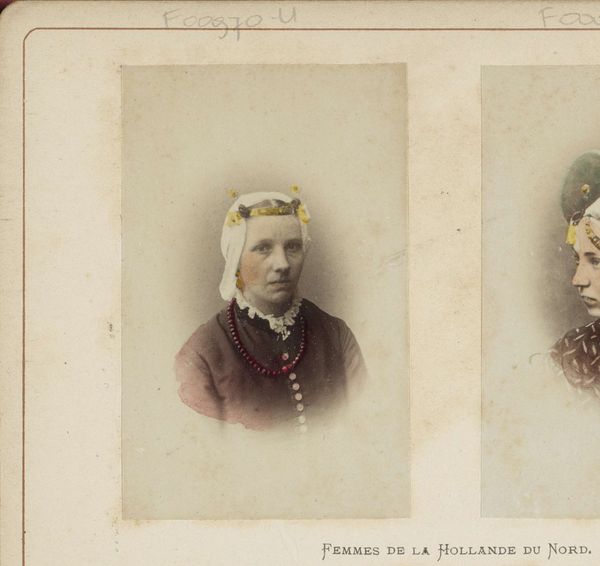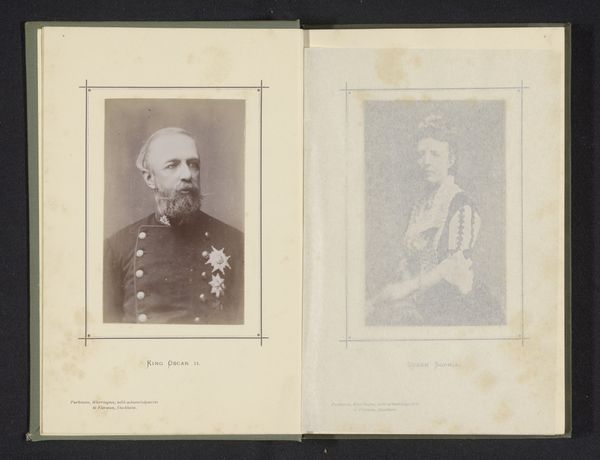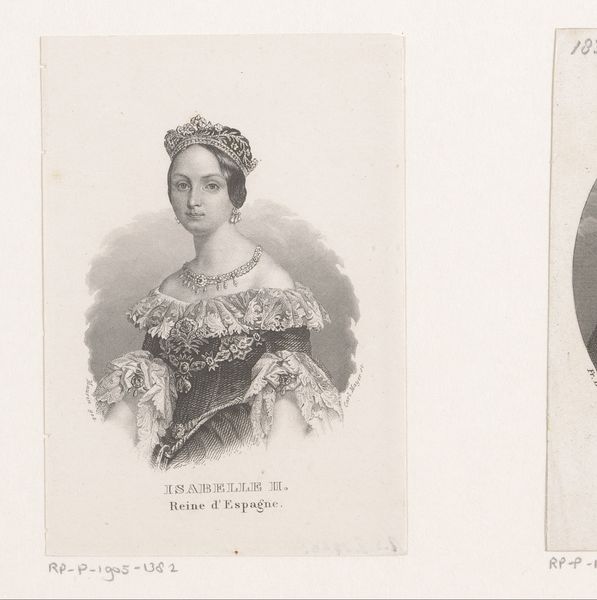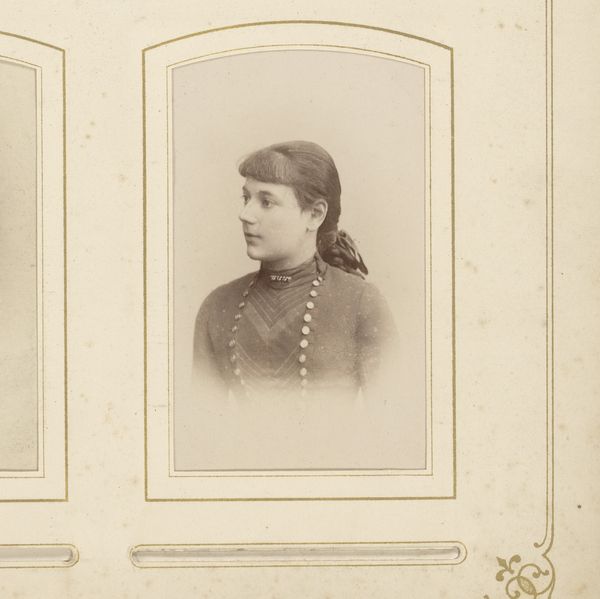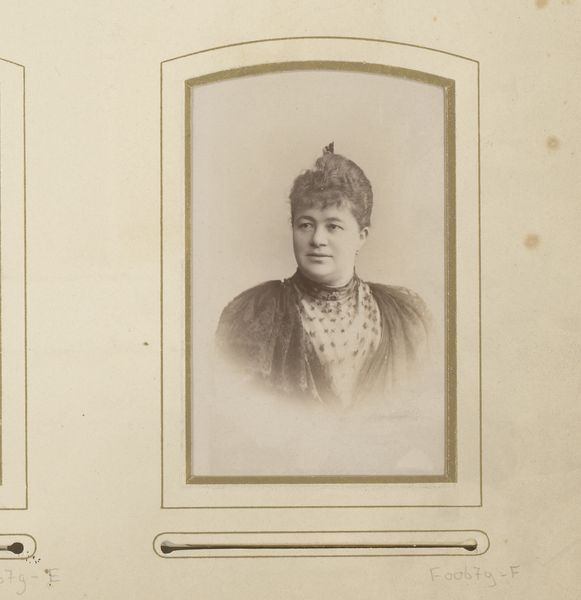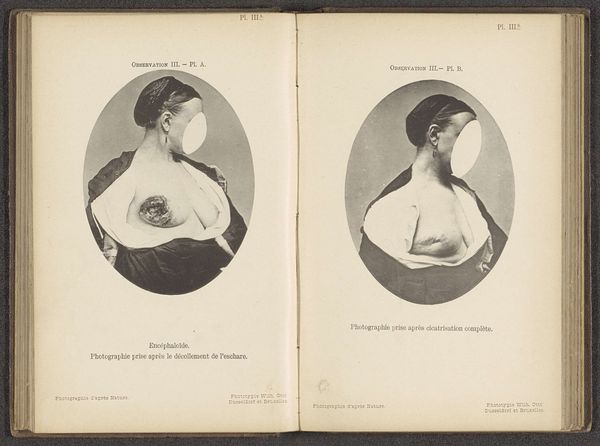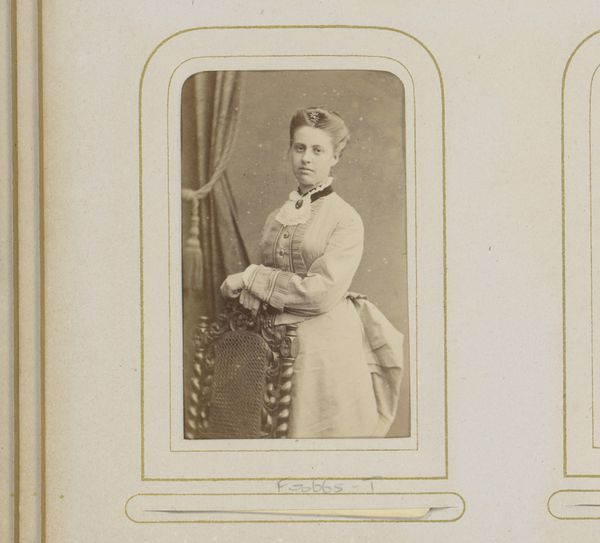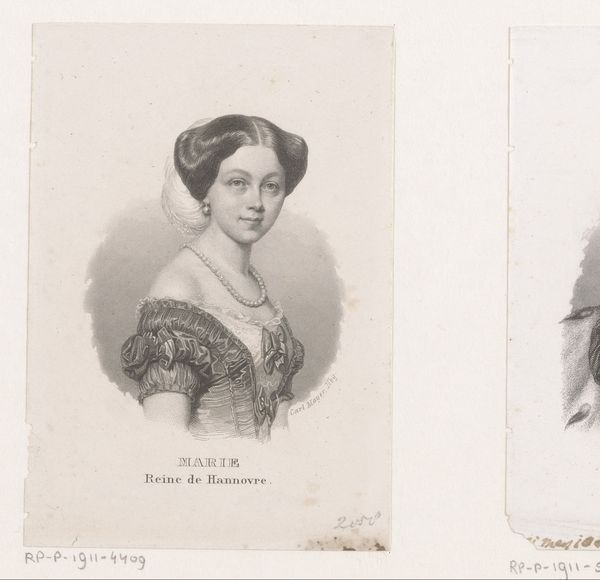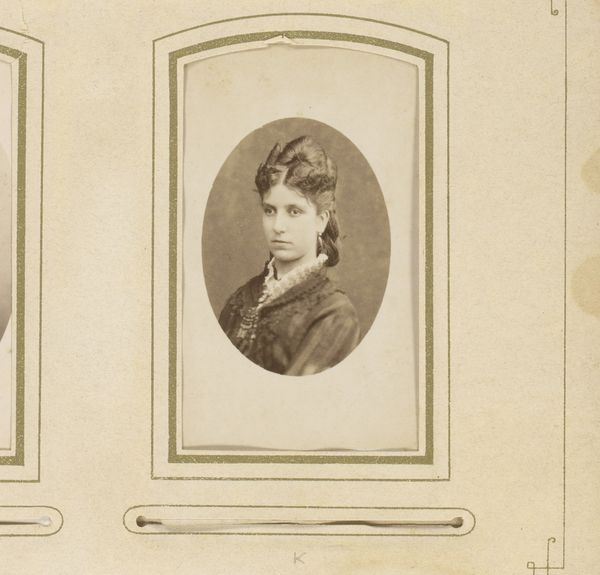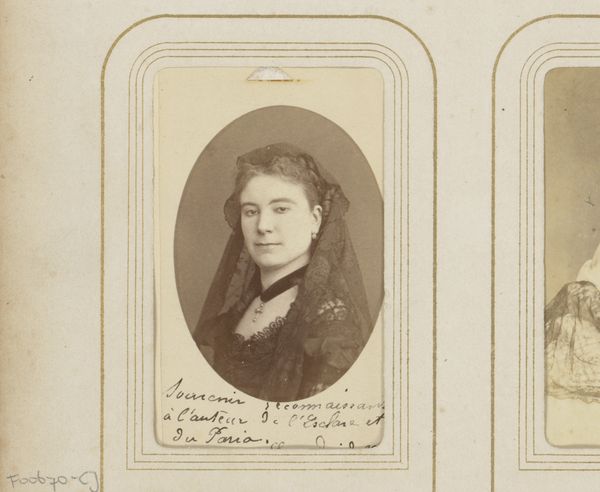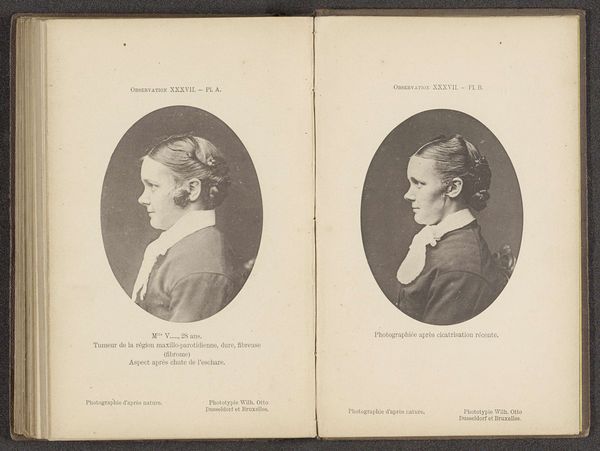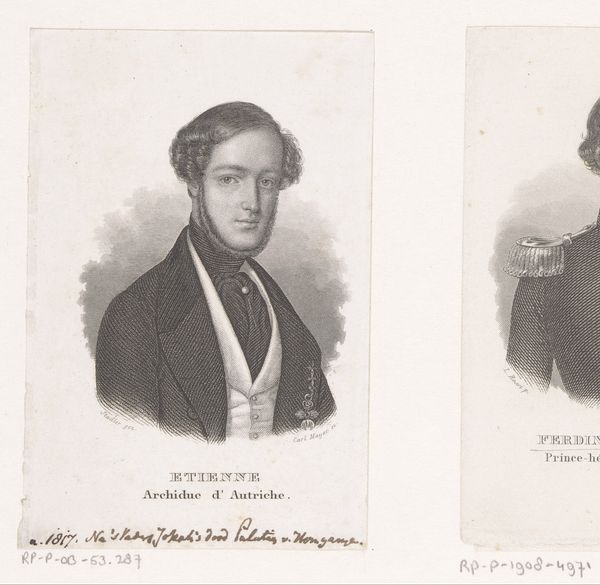
Vrouw met een litteken in haar gezicht na het verwijderen van een tumor before 1884
0:00
0:00
photography
#
portrait
#
photography
#
coloured pencil
#
academic-art
Dimensions: height 106 mm, width 76 mm
Copyright: Rijks Museum: Open Domain
Curator: This image shows facing photographs presented side-by-side in an open book. The title, as it appears inscribed above the two portraits, is "Vrouw met een litteken in haar gezicht na het verwijderen van een tumor," which translates to "Woman with a scar on her face after removal of a tumor." Though the artist remains anonymous, it is dated to before 1884. The medium, interestingly enough, appears to be photography with elements added in coloured pencil. Editor: It’s… arresting. The direct gaze, coupled with the visible mark of the tumor’s removal, creates an intimate yet clinical feel. The composition, the contrasting before-and-after images...it’s all quite stark. Curator: Consider the means of production here. These weren't aesthetic objects, necessarily, but tools within a medicalized system, part of the scientific documentation practiced at the time. We're seeing the commodification of the body in pursuit of medical advancement, but how did this impact ideas around disability and appearance within the larger culture? Editor: Exactly! And let's not forget the societal and institutional context. Medical museums, exhibitions, and publications played a role in shaping public perceptions. The very act of displaying these images—publishing them in a book with others facing the same medical plight—influenced how disease, treatment, and "cure" were understood by professionals, as well as broader audiences, I presume. This image performed a very specific public role and fulfilled the scientific politics of its era. Curator: Right. Beyond the "art" aspect, it demonstrates how knowledge production functions. Materials used in its printing; inks, paper and bindings show that this volume itself functioned almost like a scientific instrument to collect and circulate. We are made to focus on material outcomes but forget all the elements involved that can subtly contribute to the shaping of medical practice. Editor: This work, like many others of its kind, calls into question our modern assumptions of the role of artistic practice in our visual lexicon of the 19th century, by demanding we think beyond traditional notions. The before-and-after photography in the opened volume becomes something quite different from the medical archive when considered today as an entry point into complex ideas about institutionalized care. Curator: Indeed.
Comments
No comments
Be the first to comment and join the conversation on the ultimate creative platform.
